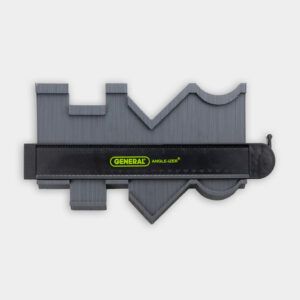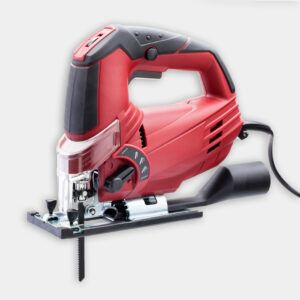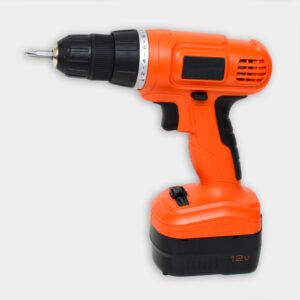We may be compensated if you purchase through links on our website. Our team is committed to delivering honest, objective, and independent reviews on home products and services.
Building a porch rail is an excellent way to add a finishing touch to your porch’s overall design while also providing additional support and security. You’ll need moderate carpentry skills to complete this six to eight-hour job. This Old House general contractor, Tom Silva, demonstrates the process in the video above. Below, we explain step-by-step how to build a porch rail.
Materials and Tools to Build a Porch Rail
Before starting your porch rail project, gather the following materials and tools:
- Cedar lumber for handrails, bottom rails, and balusters
- Ceramic-coated screws (2-inch and 3-inch lengths)
- Drill/driver
- Elastic banding
- Jigsaw
- Tape measures
- Miter saw
- Pencil
- Pneumatic stapler (1/4-inch)
- Safety equipment (goggles, gloves, dust mask)
- Stain or paint for wood protection
- Table saw
If you’re creating a porch rail between two cylindrical columns, you’ll also need measuring sticks cut with a bevel and a profile gauge.
How To Build a Porch Rail
To build your new porch rail, follow the below steps.
1. Take Measurements and Cut the Rails
The column shape can impact how you take measurements. To meet building codes in the United States, your handrails need to be at least 34 inches or 38 inches at most above the walking surface.
For square or flat columns and posts, do the following:
- Mark the desired railing height (typically 36 inches) on the posts.
- Measure the space between the two posts, mark-to-mark.
- Cut the handrail and bottom rail to size.
In the video, Tom demonstrates how to measure between two rounded columns. Here are some steps to follow:
- Mark the desired railing height (typically 36 inches) on the posts.
- Position the measuring sticks so each bevel is facing outward, and place each end on the column’s marks.
- Holding the sticks tightly together, mark any spot where the two sticks meet.
- Place the sticks on the handrail and mark one end of the railing.
- Slide one of the two sticks until the mark you placed in step four lines up again.
- Mark the other end of the railing on the handrail.
- Repeat steps five through seven for the bottom rail.
- Use a profile gauge to determine the radius of the column.
- Mark the profile on both ends of the handrail and bottom rails.
- Using a jigsaw, cut the rails to length and follow the traced profile.
2. Cut the Balusters
Cut balusters to the required length, accounting for the desired space between the top and bottom rails. Rip 3/8-inch-thick by 1 1/2-inch-wide nailing strips from cedar two-by-fours using a table saw.
3. Sand and Seal
Before you start putting everything together, do the following:
- Sand the cut ends of the handrail and bottom rail.
- Fill any visible holes with wood filler.
- Sand the filled areas smooth once dry.
- Seal all of the pieces using a stain or paint.
4. Space and Attach Balusters
In the United States, building code requires that balusters should be no more than 4 inches apart. With that in mind, do the following:
- Arrange the railing parts on a flat surface.
- Use elastic banding marked with 2-inch increments to determine baluster placement.
- Stretch the banding across the balusters until the spacing is slightly less than 4 inches on center.
- Transfer the marks from the banding to the nailing strips.
- Align the balusters with the marks on the nailing strips.
- Use a pneumatic stapler to tack the nailing strips to the ends of the balusters.
- Secure the nailing strips to the balusters with 2-inch ceramic-coated screws.
5. Install the Railing System
With all components prepared, it’s time to install the porch rail. Here’s how:
- Install the bottom rail between the porch posts, securing it with 3-inch ceramic-coated screws.
- Place the baluster assembly on top of the bottom rail.
- Install the top handrail between the posts, securing it with 3-inch ceramic-coated screws.
- Staple the baluster assembly to both the bottom and top rails.
- Fill any visible screw holes with wood filler and sand once dry.
- Apply a final coat of stain or paint to touch up any areas that may have been affected during installation.
Porch Railing Maintenance Tips
Here’s how you can keep your new porch rail looking great and functioning properly:
- Check for any signs of rot or damage, especially in areas where water may collect.
- Clean the railing periodically with mild soap and water.
- Reapply stain or paint every few years to protect the wood from weathering.
- Regularly inspect the rail for any loose screws or balusters.
Our Conclusion
Building a porch rail is a rewarding do-it-yourself project that enhances both the safety and appearance of your outdoor space. By following these steps and using expert techniques, you can create a sturdy, well-fitted railing that will last for years to come.






